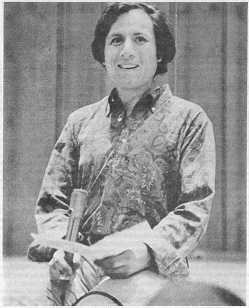
QUESTION: While watching the action attendant the occupation of People’s Park, I received several mild doses of tear gas. The result seems to be a considerable lessening of congestion in my sinuses, though I suffer from chronic sinusitis. Do you recommend this treatment?
ANSWER: Two types of tear gas have apparently been used during the current Berkeley crisis, CN and CS, technically they aren’t gases but solids dispersed as aerosols.
CN or chloroacetrophenone (C6H6- COCCH2C1) is a fast-acting irritant to the eyes and upper respiratory passages which was invented at the end of WW1. According to Chemical and Biological Warfare by Seymour Hersh, the official military manual TM3-215 states:
“In higher concentrations it is irritating to the skin and causes a burning and itching sensation; especially on moist parts of the body. High concentrations can cause blisters. The effects are similar to those of sunburn, are entirely harmless and disappear in a few hours. Certain individuals experience nausea following exposure to CN.”
CS or o-chlorobenzalmalanonitrile is said to have been developed by the British in the 1950s. The “S” means “super” and its formula is C1C6H4CHC(CN3).
“CS produces immediate effects even in low concentrations… The onset for incapacitation is 20 to 60 seconds and the duration of effects is 5 to 10 minutes after the affected individual is removed to fresh air. During this time the affected individuals are incapable of effected concerted action. The physiological effects include extreme burning of the eyes accompanied by copious flow of tears, coughing, difficulty in breathing, and chest tightness, involuntary closing of the eyes, stinging sensations of moist skin, running nose, and dizziness or swimming of the head. Heavy concentrations will cause nausea and vomiting in addition to the above effects.” (TM-3-215)
On May 20th, a military helicopter sprayed teargas over the Berkeley campus of the University of California. The gas, probably of the CS type, enveloped Cowell Memorial Hospital and drifted up to the Strawberry Canyon Recreational Area, affecting small children and their mothers. The following instructions for treatment of exposure to tear gas were prepared by Henry Bruyn, M.D., director of Cal’s Student Health Service:
Slight-Moderate Exposure
EYES: Expose to fresh air. Do not rub.
SKIN: Keep dry for 4-6 hours. If the skin is wet, shower with soap.
NASAL DISCHARGE: Will subside rapidly without treatment.
SHOES: Should be washed with a sponge or cloth.
GREASE OR OINTMENT: Should NOT be used before or after exposure, otherwise gas particles will cling to the skin.
Heavy Exposure
(Powder will be visible on the clothes and body.)
EYES: Large amounts of plain tap water. Burns of the cornea are possible, so eyes should be checked by a physician. Recovery takes about 2 weeks.
SKIN: Water increases the stinging but helps prevent burns.
HAIR: Should be thoroughly washed.
CLOTHES: Should be washed with a detergent.
Medical personnel may be affected by a patient’s skin, hair and clothing. Victims of a severe tear gas attacks should, if possible, remove their clothes and shower before entering a treatment area.
Tear gas may linger for long periods in cloth and paper. A visit to Cody’s Book Store on Haste and Telegraph caused my eyes to tear a week after one of Berkeley’s tear gas episodes.
I can’t really recommend tear gas as treatment for chronic sinusitis, but I’d like to know if other readers had similar effects. Perhaps leaders in future demonstrations will have post-nasal drips and wave handkerchiefs instead of flags.
A scene observed during one of the People’s Park skirmishes seems to sum-up the situation in Berkeley these last few weeks. Standing in the middle of the Telegraph and Durant intersection, near UC Corner, was a heavily armed policeman clad in flak jacket and gas mask. From the corner of his eye he saw a sudden movement. He whirled around and heaved a tear gas grenade at a small brown bird.
Dear Dr. Hippocrates is a collection of letters and answers published by Grove Press. $5 at your favorite bookstore.
Dr. Schoenfeld welcomes your letters. Write to him c/o P.O. Box 9002, Berkeley California. 94709.
